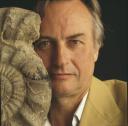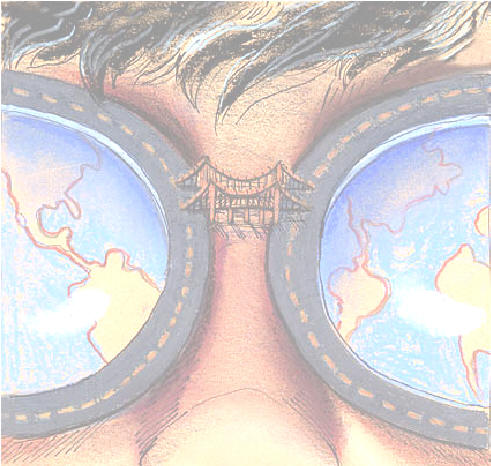There are many who yearn for spiritual food who are put off by the antics and corruption of religions. Perennial Philosophy or mystical paths such as Sufism can provide that food. But what are the basics of this core belief that transcends religions?
This is the beginning of an attempt to provide such a n i.ntroduction. Currently I am developing it in a question and answer format.
Coming Home
—–
Waking up to the Spirit you have always been
—–
A book for the non religiously spiritual.
—–
Roger Prentice
—–
Introduction:
This is an attempt, using questions and answers, to present simply and clearly the truth about being spiritual – initially without reference to religions.
This is for family, friends and students – and all those who want to realize, i.e. realize the deepest in themselves. I haven’t achieved this to a high order. Many of you can out-do me in many good things. But it seems my task is to collect and re-present these insights. I am painfully aware of my shortcomings. But as Heschel says to be human is to suffer the knowledge of the difference between what we should be and what we are. The only ‘crime’ is to say ‘that’s the way I am and I’m not going to change’. To say that is also very dangerous. We are all designed to struggle toward our own perfection – to become more and realize our gifts more fully in the mutuality of love.
This is an action-based account i.e. there are a range of simple ‘To do’ practices that can help you relax into:
To do: Sit quietly as often as you can – and let your breath breathe you. (More to follow)
Part 1 is an attempt to present the ‘bare bones’ without reference to the great and the good, or to philosophies or religions.
Part 2 goes a stage deeper and introduces ideas from some of the great and the good – people such as Ken Wilber.
Part 3 goes deeper.
Coming Home
Part 1- Re-finding our-selves = re-finding the spirit we thought we had lost
Q. What is spirit?
A. All that isn’t simply physical.
Q. Does that mean mind as well as feelings?
A. Yes if we put mind and heart together we get ‘heart-mind’. Heart-mind = our interior landscape or simply consciousness – the great inner ‘sea’ of feelings and thoughts. Neither heart nor mind in this sense are physical.
Q. Is that all spirit is?
A. It a) is the life-force b) the force of attraction that holds all bodies together and c) it is walking on in the right spirit – until all becomes Spirit.
Q. Are there other names for the spiritual?
A. Yes many – love, energy, chi etc.
Q. So spirit, or love as attraction, holds everything together?
A. Yes. Another definition of being spiritual is ‘to live for others’, to be of service.
Q. What else comes from spirit, apart from the warmth of love?
A. The light of the mind, knowing. ‘Warmth and holding together’ and ‘the light of seeing and knowing’ – both flow from love.
Q. What about everyday activities? Is walking spiritual?
A. It can be.
Q. Is running spiritual?
A. It can be.
Q. Is Sky-diving spiritual?
A. It can be.
Q. Is sex spiritual?
A. It can be.
Q. Is breathing spiritual?
A. It can be. The great yogic teaching is that the breath is that which connects the physical and the spiritual.
Q. Why ‘can be’ in all of these?
A. It is ‘yes’ if we a) re-cognize such activities in the context of the spiritual and b) realize the eternal in ourselves.
But it is ‘no’ if we remain tied to the miseries of our own ego.
Q. Does that mean that everyone is spiritual?
A. Yes but each needs to plug in and switch on! We all spring from the Whole, just as sunlight emanates from the sun. But we have to allow ourselves to feel, & acknowledge, the awareness that deep down we know was there from the beginning.
Q. Is being spiritual a normal state of being?
A. Yes it is simply being more than self-centredness. It is being conscious of the Whole/the Source/the Spirit that is beyond our individual ego. This consciousness gradually widens the circle of its concern and allows us to lessen our attachment to our ego.
Q. So loving more widely – like the outflowing circles from a dropped stone in a pond – is freeing?
A. Yes – those who really achieve insight cease to be run by the pleasures and torments of the the ‘small self’ – the ego and tru freedom increases..
Q. Isn’t this something that only special people – saints or mystics – can do?
A. No it is part of being human and we all have such experiences. But we fail to realize their closeness and fullness, mainly because they are so simple & there all the time – we’ve failed to notice, for want of quietness and contemplation! In any case we are all mystical just as we are all philosophical its part of the package of being human – just as much as is being social, sexual and creative.
Q. How do we make those experiences a stronger part of our lives?
A. Contemplation or meditation – as one source says ‘Be still, and know …’.
Q. How do we stop or prevent ourselves being spiritual?
A. Not staying conscious of that Whole from which we spring (emanate). And by staying attached to the pleasures and torments of ego-identification.
Q. Is there any other sense that someone might not be, or stop being, spiritual?
A. When they are attached to any thing that prevents her/him from experiencing their true Self.
Q. How many kinds of attachment are there?
A. Many – we think of gross ones such as alcohol and drugs but many are subtle – materialism, status etc – some are very subtle, perhaps ultimately even the attachment to not being attached!
Q. What do I do if violent or filthy or self-destructive thoughts or ‘demons’ come into my head?
A. Let them pass as though they were moving across a cinema screen and say, ‘Hello good morning/ eve etc, thank you and goodbye.’ Our True Self is not our thoughts. Thoughts come from the ego.
Q. Why what good would that do?
A. It will help you understand that you are not your thoughts.
Q. If I’m not my thoughts then what am I?
A. You are part of the Whole, in the temporary emanation and form of being uniquely you for 80 or so years.
Q. The Whole of what?
A. The Universe and beyond (everything – and all that is beyond that isn’t a thing!)
Q. What else am I?
A. You are star-stuff made conscious (SEE the 3 recent BBC physics documentaries called ‘Atom’.)
Q. What else am I?
A. You are ‘a hairy bag of sea-soup’. (This is not only a joke but is an accurate statement about our physical make up and evolution!) Science and spirituality are two ways of approaching truth.
Q. Do rituals and practices help?
A. Yes providing we don’t allow them to breed complacency, narrowness, and self-satisfaction i.e. a state of attachment. The most important are contemplation/meditation, prayer, and service to others.
Q. What really is contemplation or meditation?
A. Being still to experience our True Self, instead of the mind chatter and ‘TV interference’ of the ego.
Q. And what is the ultimate secret of the universe?
A. It is pointed to, not described, in these the final sentences of Wilber’s The Eye of Spirit;
When the great Zen master Fa-ch’ang was dying, a squirrel screeched out on the roof. ‘It’s just this’ he said, ‘and nothing more’. SFB P.258
Q. I don’t geddit!
A. Here it is again from another master;
The world is illusory
Brahman alone is real;
Brahman is the world. (SFB p19)
Q. Still don’t geddit!
A. Here it is again from another master;
There is neither creation nor destruction,
Neither destiny nor free-will;
Neither path nor achievement;
This is the final truth. (One Taste p468)
Q. Still don’t geddit!
A. ‘Walk on‘ (The Buddha). Walk on in the right spirit – lighten up and have forgiving and compassionate fun – until all becomes Spirit.
—–0—–
All postings to this site relate to the central SunWALK model in the PhD.
Summaries are HERE



 Source
Source
 Richard Dawkins – bete noir of many religionists. Source
Richard Dawkins – bete noir of many religionists. Source Source
Source



